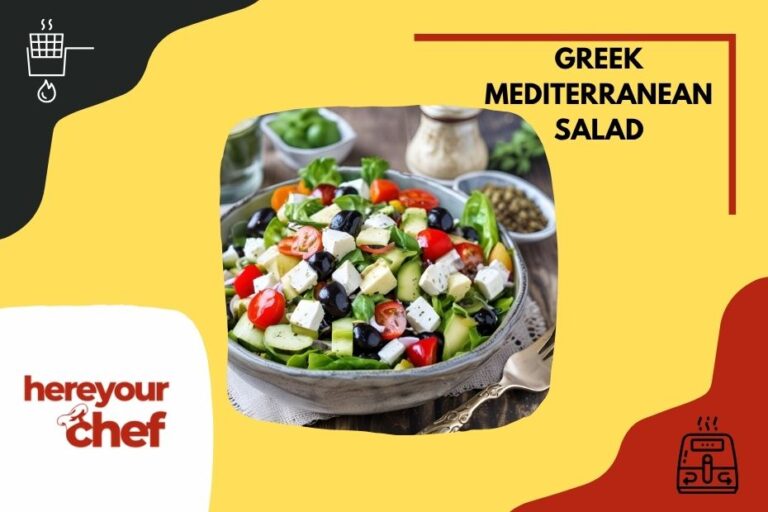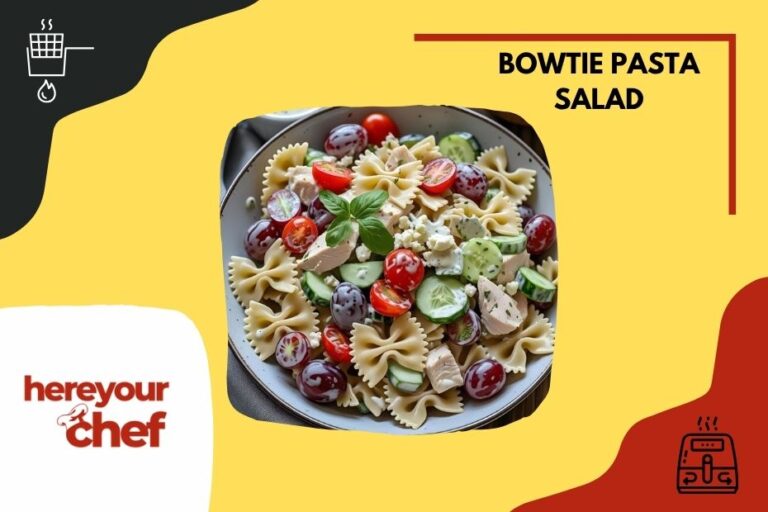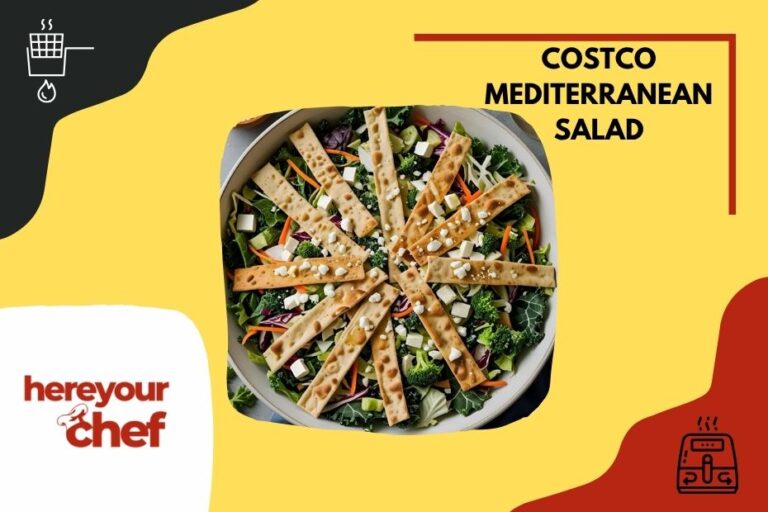The Best Tomato Pasta Salad Recipe: Quick, Easy, and Delicious
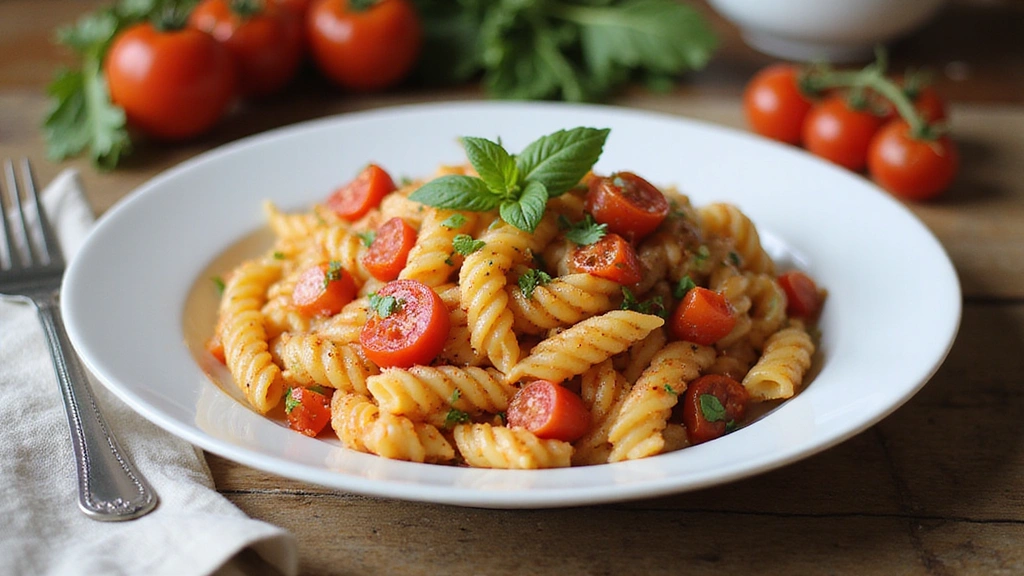
This delightful Tomato Pasta Salad brings together the vibrant flavors of fresh tomatoes and herbs with the comforting essence of pasta.
Whether it’s a summer picnic or a cozy winter gathering, this dish’s versatility makes it a staple for any occasion.
I stumbled upon this recipe during an Italian cooking class, where its simplicity and depth of flavor captivated me.
The combination of ripe, juicy tomatoes and perfectly cooked pasta creates a harmony that’s both refreshing and satisfying.
Perfect for a quick lunch or a side dish at a dinner party, this salad is bound to impress with minimal effort.
Let this recipe be your go-to when you need something delicious in a pinch.
The History and Cultural Significance
• The Best Tomato traces its origins to Southern Italy, where it was originally created by resourceful home cooks using garden-fresh vegetables.
• The dish evolved over decades as pasta varieties and tomato cultivation spread, eventually becoming the beloved version we know today.
• In Italian culture, this dish traditionally appears at summer gatherings and family reunions, symbolizing abundance and hospitality.
• While many variations exist across different regions, the authentic version maintains the simplicity of fresh ingredients that sets it apart from imitations.
Recipe Overview
| Recipe Times & Servings | |
|---|---|
| ⏱️ Prep Time: | 15 minutes |
| 🔥 Cook Time: | 10 minutes |
| ⏰ Total Time: | 25 minutes |
| 👥 Servings: | 4 |
Nutritional Information (per serving)
| Nutritional Information (per serving) | |
|---|---|
| 🔥 Calories: | 320 |
| 🥩 Protein: | 10g |
| 🌾 Carbs: | 45g |
| 🥑 Fat: | 10g |
| 🌿 Fiber: | 5g |
| 🍯 Sugar: | 6g |
Essential Equipment Guide
Large Mixing Bowl: A large mixing bowl is essential for combining ingredients evenly, ensuring every bite of salad is perfectly seasoned. Alternatives like a salad bowl work, but ensure it has enough space for thorough mixing.
Chef’s Knife: A sharp chef’s knife is crucial for slicing tomatoes and herbs cleanly, preserving their texture and flavor. Alternatives like a serrated knife can work for tomatoes but may require more care.
Colander: Draining pasta efficiently is important to prevent sogginess, making a colander indispensable. Look for one with sturdy handles and a stable base.
Ingredients
For the Base
| Amount | Ingredient | Notes |
|---|---|---|
| 2 cups | uncooked spiral pasta | provides structure and texture |
| 3 medium | tomatoes | diced, at peak ripeness for flavor |
Vegetables
| Amount | Ingredient | Notes |
|---|---|---|
| 1 cup | cucumber | sliced thin for crunch |
| 1 small | red onion | finely chopped for sharpness |
Seasonings
| Amount | Ingredient | Notes |
|---|---|---|
| 1 teaspoon | salt | enhances overall taste |
| 1/2 teaspoon | black pepper | adds mild heat |
For the Dressing
| Amount | Ingredient | Notes |
|---|---|---|
| 1/4 cup | olive oil | adds richness and binds ingredients |
| 2 tablespoons | balsamic vinegar | provides acidity and depth |
| 1 teaspoon | honey | balances acidity with sweetness |
Herbs
| Amount | Ingredient | Notes |
|---|---|---|
| 1/4 cup | fresh basil leaves | torn for freshness and aroma |
Preparation Methods
Chiffonade Cutting: This technique involves stacking, rolling, and slicing herbs into thin ribbons. It matters for this dish as it releases the aroma and flavor of basil without bruising the leaves. Master it by using a sharp knife and gentle pressure.
Emulsifying Dressing: The process of combining oil and vinegar into a smooth mixture is crucial for a cohesive dressing. Achieve it by whisking vigorously or using a blender until it thickens slightly.
Shocking Pasta: Quickly cooling cooked pasta under cold water stops further cooking and retains texture for the salad. Ensure the water is ice-cold for best results.
Step 1: Prepare Ingredients
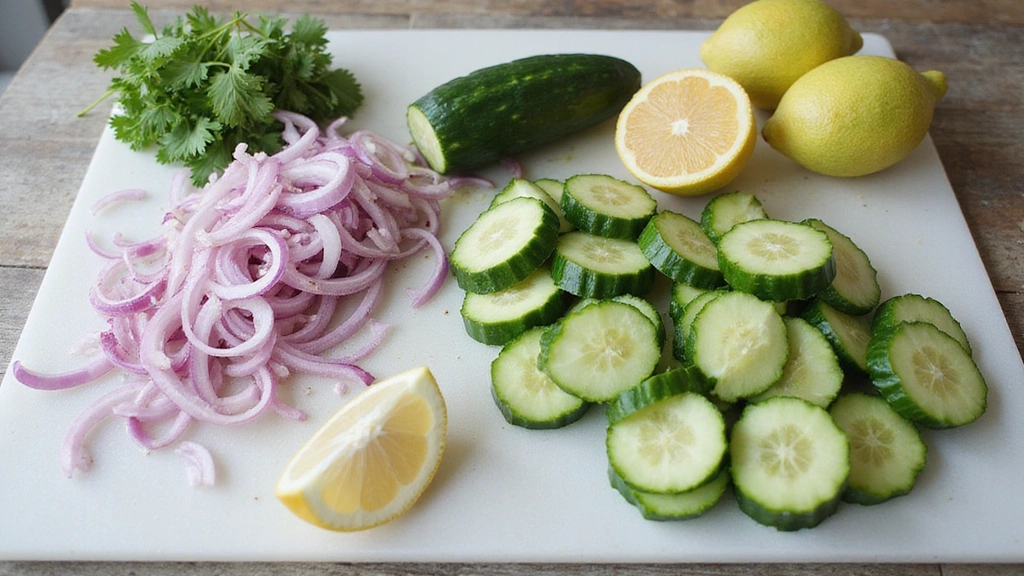
Gather all ingredients and equipment on a clean workspace.
Wash and dry all vegetables thoroughly.
Peel and finely chop the red onion, and slice the cucumber thinly.
Dice the tomatoes into even pieces for consistent bites.
Step 2: Cook the Pasta

Bring a large pot of salted water to a rolling boil.
Add the spiral pasta and cook according to package instructions.
Stir occasionally to prevent sticking.
Test for al dente texture before draining.
Step 3: Drain and Cool the Pasta
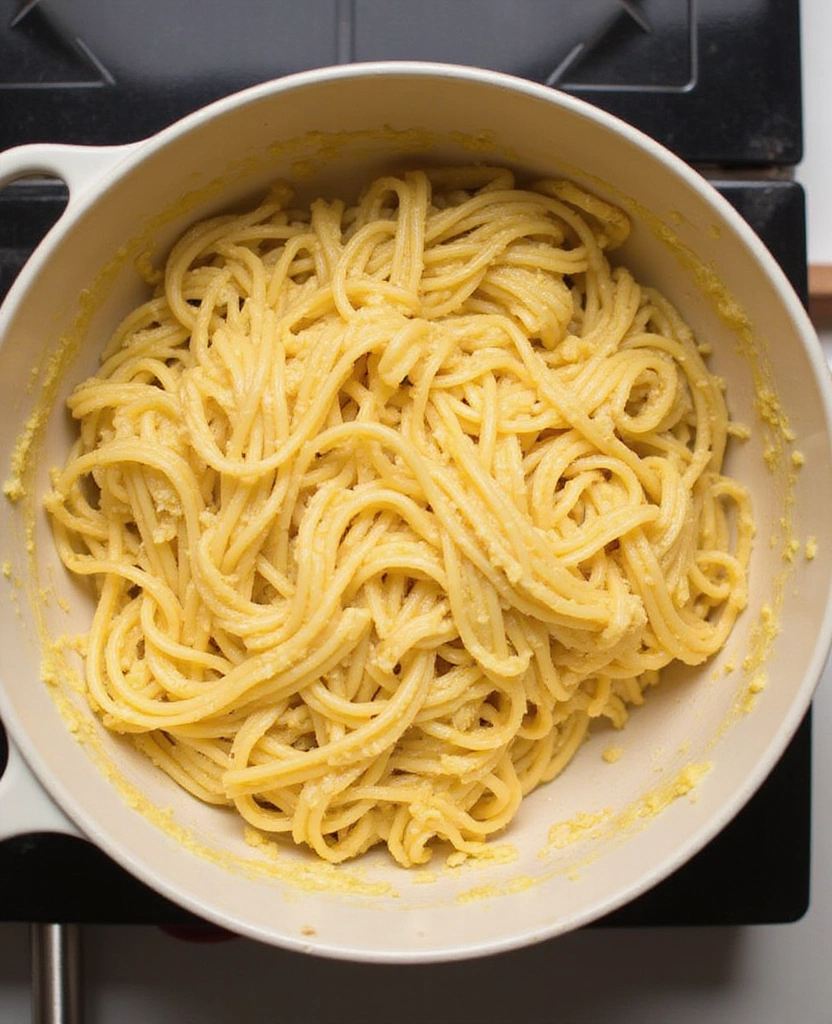
Pour the cooked pasta into a colander over the sink.
Rinse immediately under cold running water to stop further cooking.
Shake the colander gently to remove excess water.
Set aside to allow the pasta to cool completely.
Step 4: Prepare the Dressing
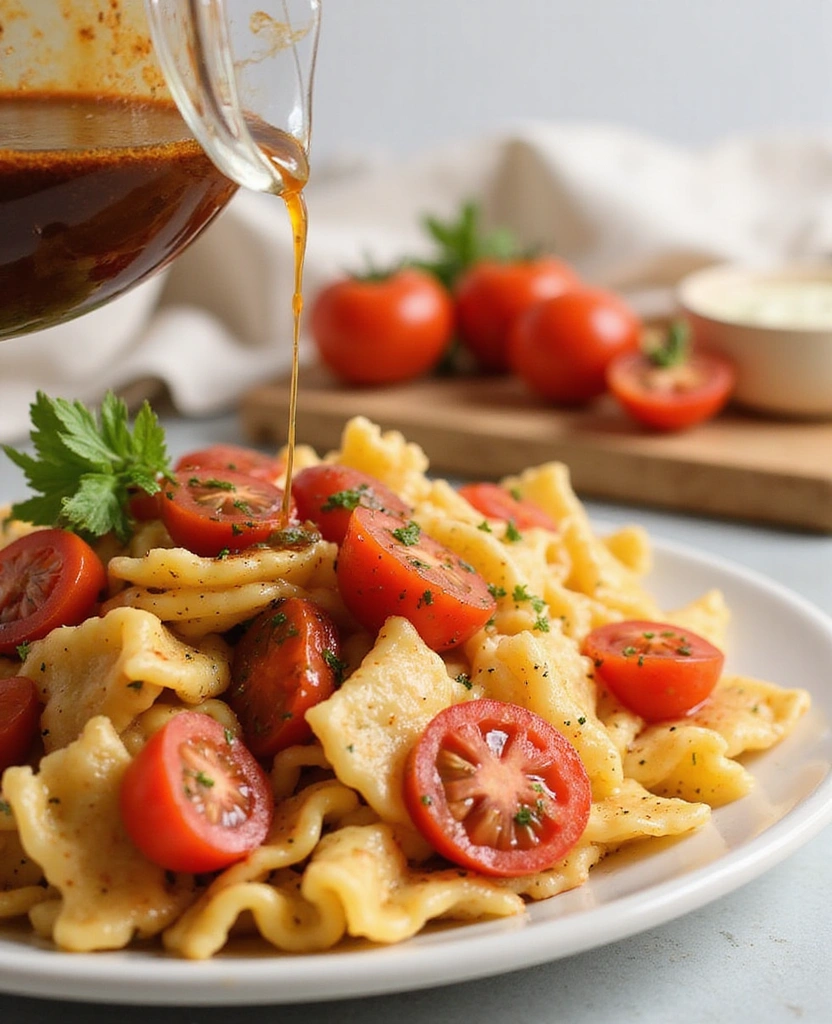
In a small bowl, combine olive oil, balsamic vinegar, and honey.
Whisk vigorously until the mixture is silky and slightly thickened.
Taste and adjust seasoning with salt and pepper if needed.
Set aside for flavors to meld.
Step 5: Combine Ingredients
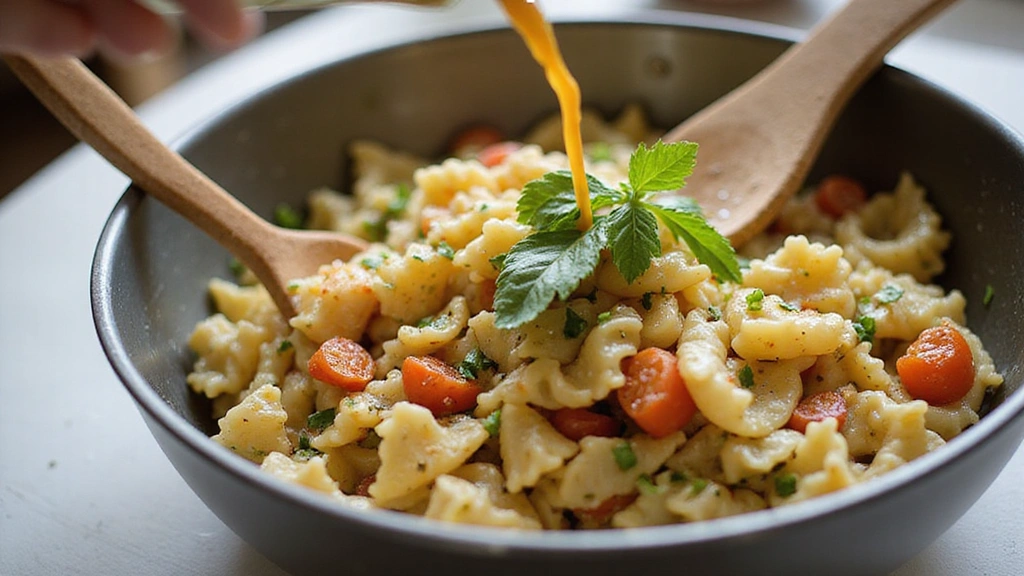
In a large mixing bowl, combine cooked pasta, diced tomatoes, cucumber slices, and chopped red onion.
Pour the prepared dressing over the ingredients.
Gently toss to coat everything evenly with the dressing.
Ensure all components are well integrated.
Step 6: Add Fresh Herbs
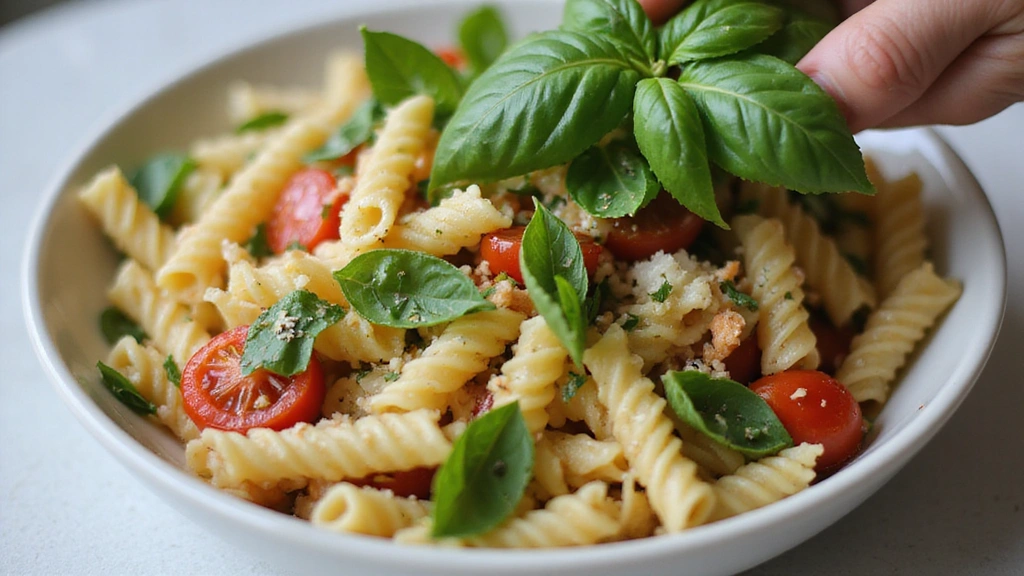
Tear fresh basil leaves into small pieces and add them to the salad.
Use the chiffonade technique for a refined presentation.
Toss the salad gently to distribute the herbs evenly.
The basil should be aromatic and visible throughout the dish.
Step 7: Chill the Salad
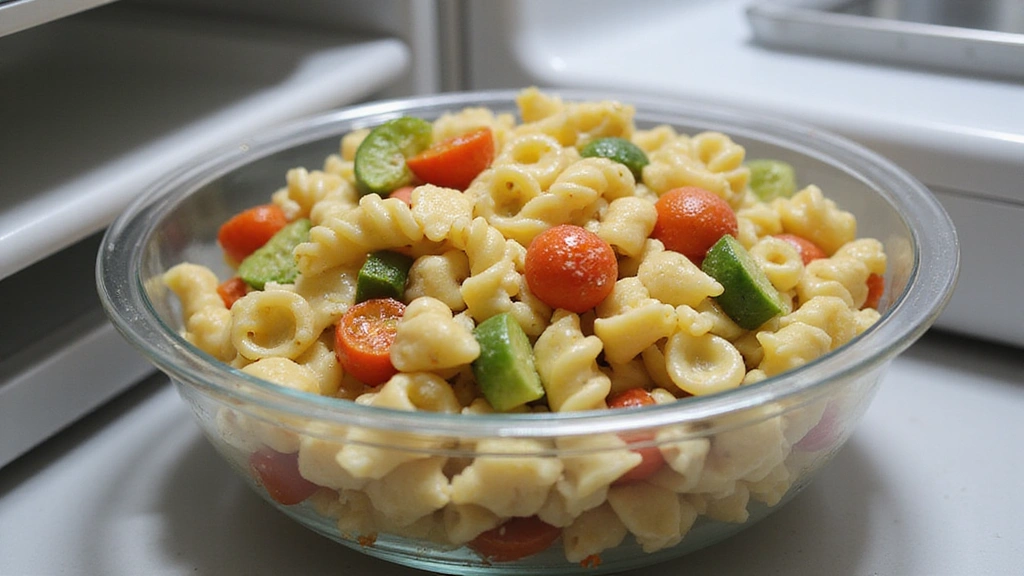
Cover the salad with plastic wrap or a lid.
Refrigerate for at least 30 minutes to allow flavors to develop.
Stir the salad once during chilling to ensure even flavor distribution.
The salad should be cold and refreshing before serving.
Step 8: Serve and Enjoy
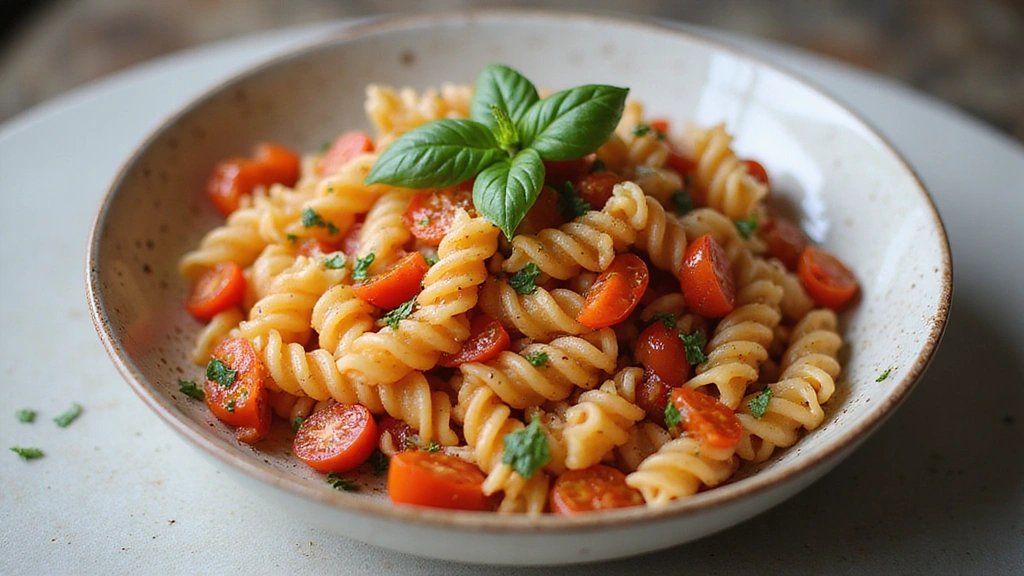
Remove the chilled salad from the refrigerator.
Give it a final gentle toss to refresh the dressing.
Transfer to a serving dish or individual bowls.
Garnish with extra basil leaves for a vibrant finish.
Critical Timing and Temperature Guide
Cooking the Pasta: Cook pasta for 8-10 minutes until al dente. Test by biting a piece; it should be firm but not crunchy. Avoid overcooking, which leads to mushy texture.
Chilling the Salad: Chill for at least 30 minutes but no more than 2 hours to prevent over-soaking of the dressing. Ensure the fridge is set to 4°C (39°F) for optimal freshness.
Serving Temperature: Serve salad cold but not icy to maintain texture and flavor balance. If too cold, let it sit at room temperature for 10 minutes.
Pro Tips for The Best Tomato
• Ingredient Selection: Choose vine-ripened tomatoes for optimal sweetness and flavor. Fresh basil should be bright green with no dark spots.
• Preparation Secret: Toss the salad with half the dressing initially, then add more before serving to avoid sogginess.
• Temperature Management: Allow the pasta to cool completely before mixing to prevent wilting of vegetables and herbs.
• Texture Enhancement: Use spiral pasta as it holds the dressing well and provides a delightful chew.
• Flavor Layering: Incorporate a dash of red pepper flakes for a subtle heat that enhances other flavors.
• Make-Ahead Strategies: Prepare the components separately a day in advance, and mix them just before serving for freshness.
• Restaurant-Quality Finishing Touches: Add a sprinkle of grated Parmesan for a savory depth that elevates the dish.
• Equipment Optimization: Use a salad spinner to dry vegetables thoroughly, preventing dilution of flavors.
Troubleshooting Common Issues
• Flavor Too Bland: Often caused by under-seasoning. Taste dressing before adding and adjust with salt, pepper, or vinegar as needed.
• Pasta Too Soft: Overcooked pasta can lose its texture. Ensure pasta is al dente and cool it immediately under cold water.
• Salad Too Watery: This happens if ingredients are not dried properly. Use a salad spinner to remove excess moisture from vegetables.
• Herbs Wilting: Adding herbs too early can cause them to wilt. Add fresh herbs just before serving for optimal freshness.
• Dressing Not Emulsified: If the dressing separates, whisk again vigorously or use a blender to recombine.
Variations and Regional Differences
• Greek Style: Incorporates feta cheese, olives, and oregano for a Mediterranean twist, emphasizing bold flavors and creamy textures.
• Asian Fusion: Uses sesame oil, soy sauce, and ginger in the dressing for a unique, umami-rich variation.
• Mexican Influence: Adds black beans, corn, and cilantro, with a lime-based dressing for a zesty, hearty salad.
• American Classic: Features cheddar cheese, bacon bits, and a ranch-style dressing for a crowd-pleasing option.
Food Science Behind the Recipe
• Emulsification: The science of combining oil and vinegar into a stable mixture, crucial for a cohesive dressing that clings to pasta.
• Starch Gelatinization: Occurs when pasta is cooked, affecting its ability to hold dressing. Properly cooked pasta optimizes texture and flavor absorption.
• Acid-Base Balance: The dressing’s acidity from vinegar enhances the tomatoes’ natural sweetness, creating a harmonious flavor profile.
Frequently Asked Questions
What’s the most common mistake people make when preparing Tomato Pasta Salad? Overcooking the pasta, which results in a mushy texture that detracts from the salad’s overall appeal.
Can I use any type of pasta? While spiral pasta is recommended for holding dressing, penne or bowties can be used as alternatives.
How do I store leftovers? Store in an airtight container in the refrigerator for up to 2 days to maintain freshness and flavor.
Can I make this salad vegan? Absolutely, simply omit the cheese or use a plant-based alternative.
What’s the best way to add protein? Grilled chicken, shrimp, or chickpeas are excellent options for adding protein to the salad.
Is it okay to use dried herbs instead of fresh? Fresh herbs are preferred for their vibrant flavor, but dried can be used in smaller quantities if fresh are unavailable.
How can I make the salad more filling? Add cooked quinoa or couscous for additional texture and heartiness.
Serving and Presentation Guide
• Traditional Presentation: Serve in a large, rustic bowl with a sprig of fresh basil for a classic look.
• Individual Portions: Divide into small bowls or plates, garnished with a single basil leaf for an elegant touch.
• Picnic Style: Pack in a mason jar for portable, visually appealing servings.
• Family-Style Platter: Spread on a large platter for communal dining, allowing guests to serve themselves.
Conclusion
This Tomato Pasta Salad is a testament to the beauty of simple, fresh ingredients coming together in a harmonious dish.
Whether you’re a seasoned chef or a home cook, this recipe offers ease and elegance that’s hard to resist.
We hope this guide has inspired you to bring this vibrant dish to your table.
Don’t hesitate to share your creations and variations with us!

